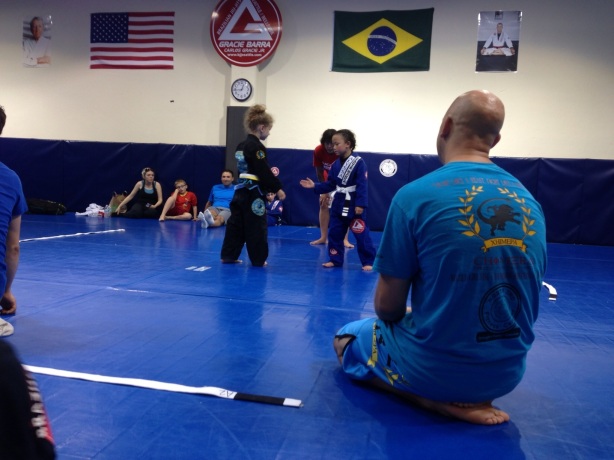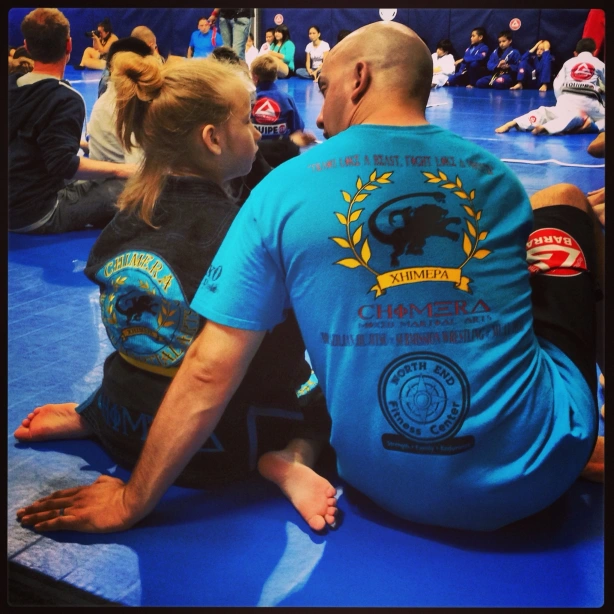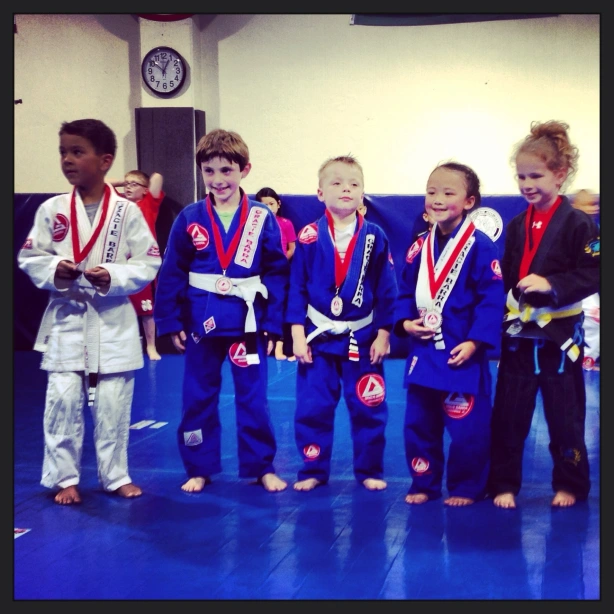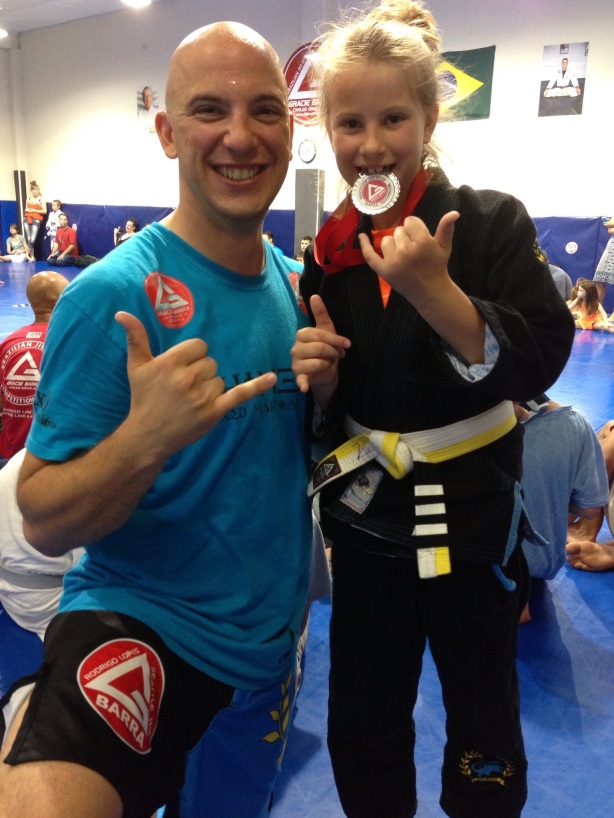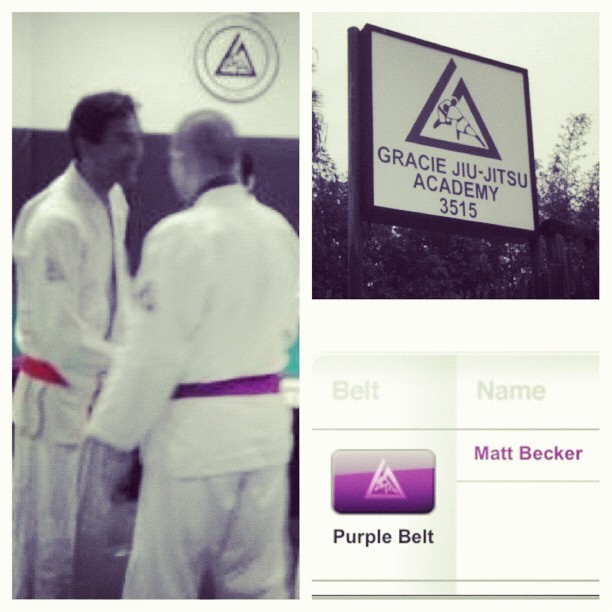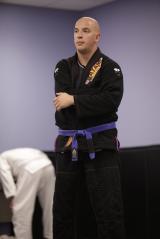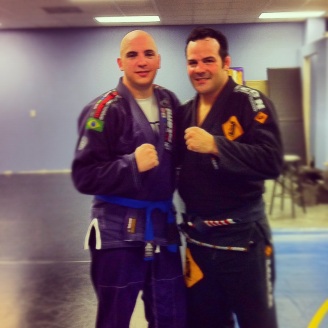As a dad, I think like most dads, I want to pass something onto my kids. Being uniquely unqualified at everything I’ve ever done in my life, I’ve figured out that I can kind of, sort of, teach Brazilian Jiu-Jitsu to my kids. It started with a couple of at-home roll-out mats and the Gracie Bullyproof discs.
1-Year(ish) Later
I helped restart the kids BJJ program for my MMA Team, Chimera Mixed Martial Arts. After a few months, Gracie Barra Seattle held an in-house kids tournament. This looked like a good opportunity to allow our kids to participate and ease into the BJJ tournament scene. I learned a lot from these kids and I hope they learned something, too.
It’s Not All About Me
It’s not about me, what I’ve taught these kids, or how well I’ve taught them. They’re on the mats, not me. Anything I’m trying to teach them ends when they shake hands and the ref says it’s time to compete.
That being said, being the coach of multiple competitors is extremely stressful. You want the other coach’s and Professor’s to notice your hard work. I wanted my coach to notice mine, anyway. Sometimes that’s made palpable by a gold medal. Sometimes it’s not.
If I lose as a competitor, it’s okay. I learned something. I physically learned what did and did not work. I can say, “I have work to do.” I can pretend I don’t care, lick my wounds, eat some ice cream, and attack it on Monday. I know what my coach is teaching me works. I’ve seen it work.
If my team loses, it’s tough. It’s not okay. I am emotionally and physically invested in multiple fighters who trust me and that what I’m trying to teach will work for them. If it doesn’t work out, then it becomes, “What did I do wrong? Is my system broken? Do I need to scrap it? Should I even be teaching these kids?”
The stress of a coach far outweighs the stress of a competitor.
It’s Okay To Lose
Not wanting to lose as a coach is understandable. Just as if I was competing, I have to try my hardest and hope for the best. I’m not a professional athlete, and I don’t train as if I was. I’m also not training professional athletes. I’m trying to teach kids to roll.
It’s not the end of the world if my kids lose. Children want reassurance. They want attention. They want love. I think I’ve learned that it’s very important to let them know that no matter what happens, win or lose, that they did an incredible job.
It’s Okay To Cry
Kids are little people. Just like people, kids have emotions and feelings. Crazy, huh? Who would’ve thought it? The problem is kids aren’t hardened by life. They haven’t figured out how to deal with their feelings. Extreme joy, disappointment, lost, bewilderment, confidence, embarrassed, frightened, angry, confused, ecstatic, hysterical, sad, or frustrated – these are just a few of the emotions you can expect to deal with. YOU will be dealing with them because these children don’t know how to. They’re going to cry. Odds are, it won’t be because they lost. It will be because they don’t understand how to cage their emotions. Be their outlet. Give them a hug. Tell them its okay to let it out and when they’re finished crying, talk to them about it.
My wife said something incredibly smart to me. She told me that when someone is crying it’s our natural tendency to inject ourselves into it. We want to help. What can I do to make you feel better? Instead of interjecting ourselves into it, let them have their moment and cry it out. Let them breathe. When they want to talk about it, they will. Be ready for it when they do.
Teach Them At Home
I have a rhythm when I teach. I’ll usually pair the kids up after class and have them drill or do some positional sparring. After about 3 minutes or so, I’ll stop them and give them each a critique and a compliment. “Hey, you could do a little bit better at hitting that sweep by under hooking the arm. You did that Americana really well. I liked the way you kept your head down, keep it up!” That seems to work great. The kids like that they got a little positive reinforcement and then, for the most part, try a little harder at whatever they needed to work on. The emotions on the mat at a tournament are way too high for that kind of teaching. It needs to be all positive reinforcement. If you want them to work on something, make a note and talk about it in class, on your home turf, after the emotions have settled.
Drill To Win, Flow To Drill
There’s no doubt about it. You have to develop muscle memory to consistently hit that technique you’re looking for. That goes for kids, too. They have to drill, drill, drill! However, there’s more to it than that. You have to flow.
Your drills have to incorporate a repeatable pattern. For example, starting from the guard, they have to pass the guard, get side control, slide to mount, establish control, and finish with an arm bar. You have to help them put the pieces of the puzzle together, just like you would at home.
They may recognize the different techniques, or even know them perfectly, but because you teach them doesn’t mean they will know when to use them. You may teach them how to pass the guard, and you may teach them side control. However, if you don’t teach them how to pass the guard and flow into side control, they won’t. Kids will do exactly what you teach. If you teach them individual techniques, they will be do individual techniques with very little flow.
Teach a flow and when they get stuck in someone’s guard, you’ll see them pass it, establish side control, slide to mount, establish control and then finish with an arm bar.
You Want Them All To Win
I was chatting with one of the other team’s coaches and he said something to me, almost in passing, “Man, you want them all to win.” I looked around and I saw these kids. All of them, not just mine. Not just my team but all the kids in the room. He was right. These are the kids of our future. They will be taking care of us the rest of our lives. I saw my own futures past in their faces and he was right. I wanted them ALL TO WIN.
Medals Aren’t The Real Trophy
I took 7 kids from our team to compete. 3 finished first in their division. 1 finished second. The others were in last. Statistically, that looks pretty good, I think. I don’t really have a baseline to compare it to, since it was my first kids tournament coaching. One of my daughters took 2nd, and the other last. I am equally proud of them. Not because of how well they did on the mat. Not because I could see that what I had taught them was sticking. I was proud because they had the courage to go out there, do something new, and face a challenge that most people will never understand. They both got a piece of shiny medal to hang on their walls, but the real trophy was watching them learn to be fearless.



